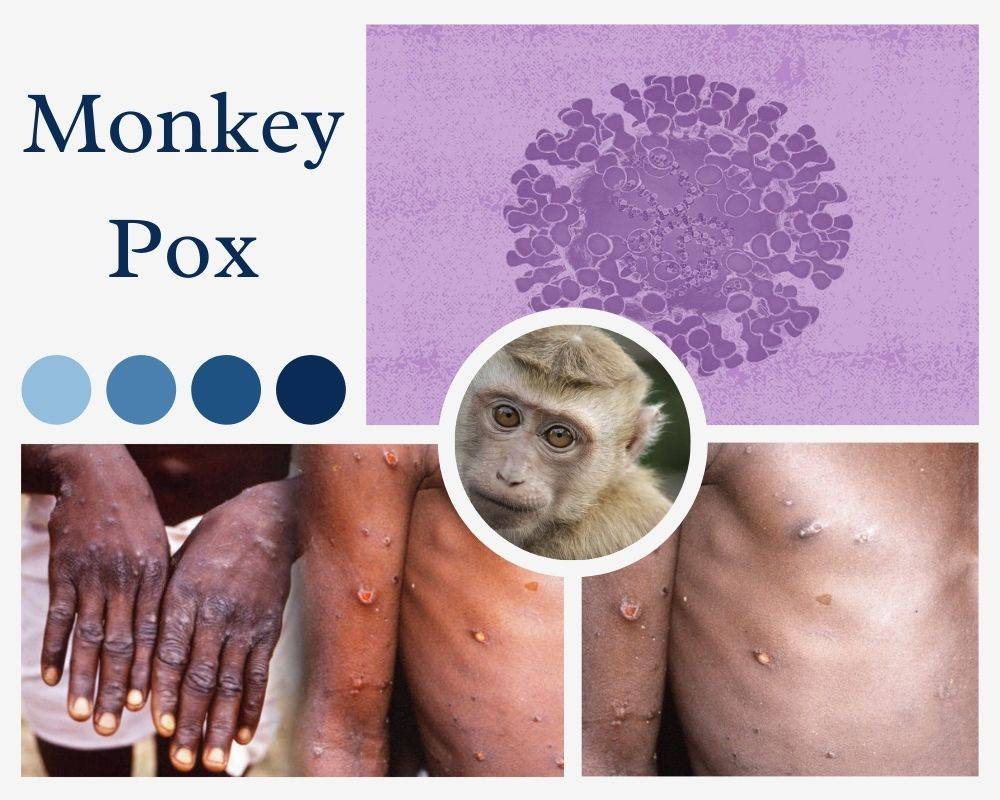History of Monkey Pox Virus
Smallpox became extinct in 1990. The monkeypox is a member of that smallpox family – orthopoxvirus. The virus was first detected in monkeys in 1958, hence the name Monkeypox. The first human body was identified in 1960 in the Democratic Republic of the Congo.
From the 1980s to the 1990s, many smallpox vaccinations were carried out to eradicate the disease. It was then found that the vaccine also gave people some protection against monkeypox. After the extinction of smallpox, monkeypox reappeared in some places.
Types of Monkey Pox Virus
Two variants were known earlier – one from Congo, and one from West Africa. The Congo variant has a mortality rate of about 10% – which is scary for many. But the death rate in the West African variant is 1%. The West African variant has been found in Europe so far, which is less horrible. It should also be kept in mind that in the villages where the disease is occasionally caught, there is not much health care, so in the improved health care system, far fewer people will die than In Sha ALLAH.
Transmission of Monkey Pox Virus
Monkeypox usually spread from animals to humans – such as squirrels, rats, etc. An outbreak in the United States in 2003 was caused by a dog. Who kept the dog with the rat from which the transmission is made.
This time the outbreak is different because so many countries have never spread so many viruses at once. This means that the virus is now being transmitted from person to person. So far there have been a number of cases in Europe that have no history of traveling to West Africa.
What are the symptoms?
Headache, body-arm-leg pain, and extreme fatigue with fever (100.4 degrees and above). This is usually accompanied by swelling of some lymph nodes. After 4-5 days of fever comes a rash that becomes a whole – a bit like chickenpox or chickenpox but a little bigger in size. It starts in the mouth or genitals and then spreads to the body.
Covid’s infection rate is still very low but not zero. It spreads from person to person in several ways – this skin is actually at the touch of the whole thing. From the cotton or bedsheet used by the sick patient. By coughing or sneezing. Although sexual transmission has not been proven, it is believed to have potential. The ones most at risk are the Gay community. After that many health workers are at risk.
Symptoms begin 5-21 days after exposure.
Complications of Monkey Pox Virus
Most people feel a little bad but get better in 2-4 weeks without any problems. Some people may be serious. The reason for being serious is usually to catch other germs by chance (the medical term is secondary infection). Serious diseases are caused by infections of the lungs (pneumonia), encephalitis of the brain, eye (especially cornea), and infections (sepsis) that spread throughout the body. All these complications can be managed if there is a good health system.
History of Outbreak of Monkey Pox Virus
11. This is not the first outbreak. It has been increasing since 2010. In 2020, 4,600 cases of monkeypox were found in the Congo. Since 2016, 500+ cases have been found in Nigeria. In 2003, 70 cases were found in the United States.
Treatment of Monkey Pox Virus
Most people will get over it by drinking more water and taking paracetamol. Complications may require certain medications. There is a licensed drug that was used in Smallpox but is nowhere to be found in the world – and many more treatments are needed. The Smallpox vaccine provides 75% protection. Although none of us under-40s have received this vaccine. There is already a vaccine against monkeypox although there is no production.

